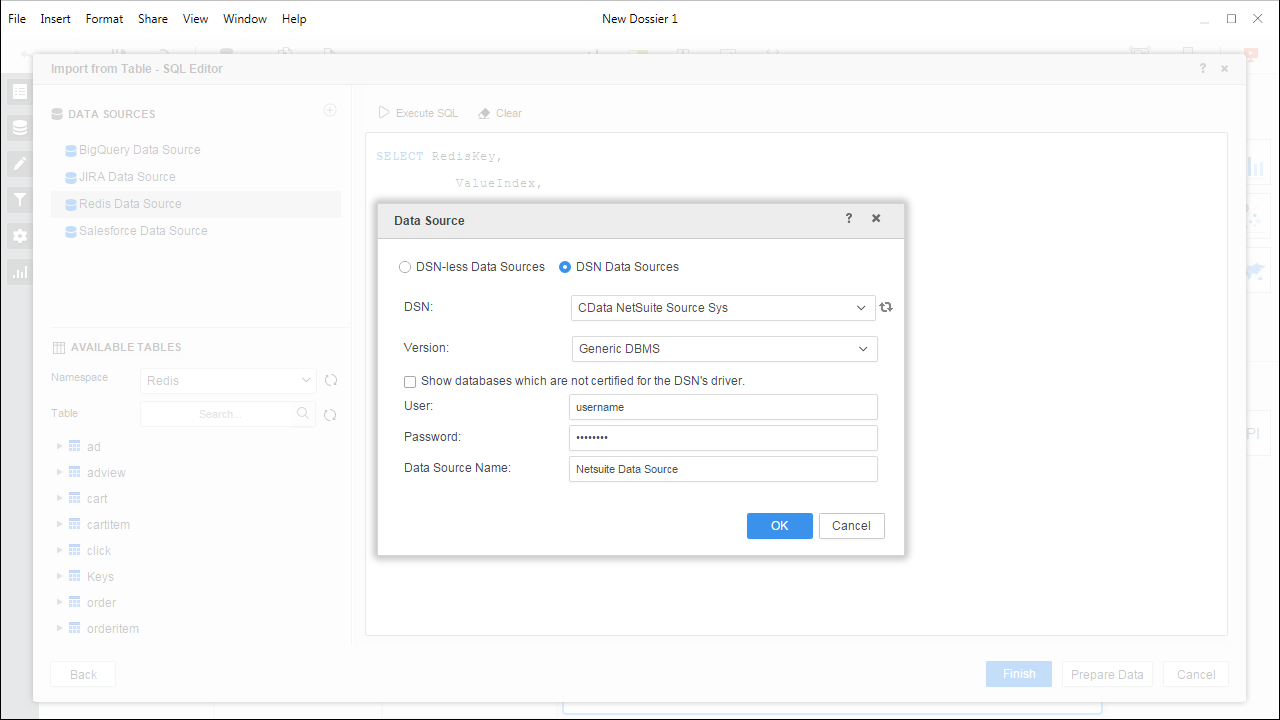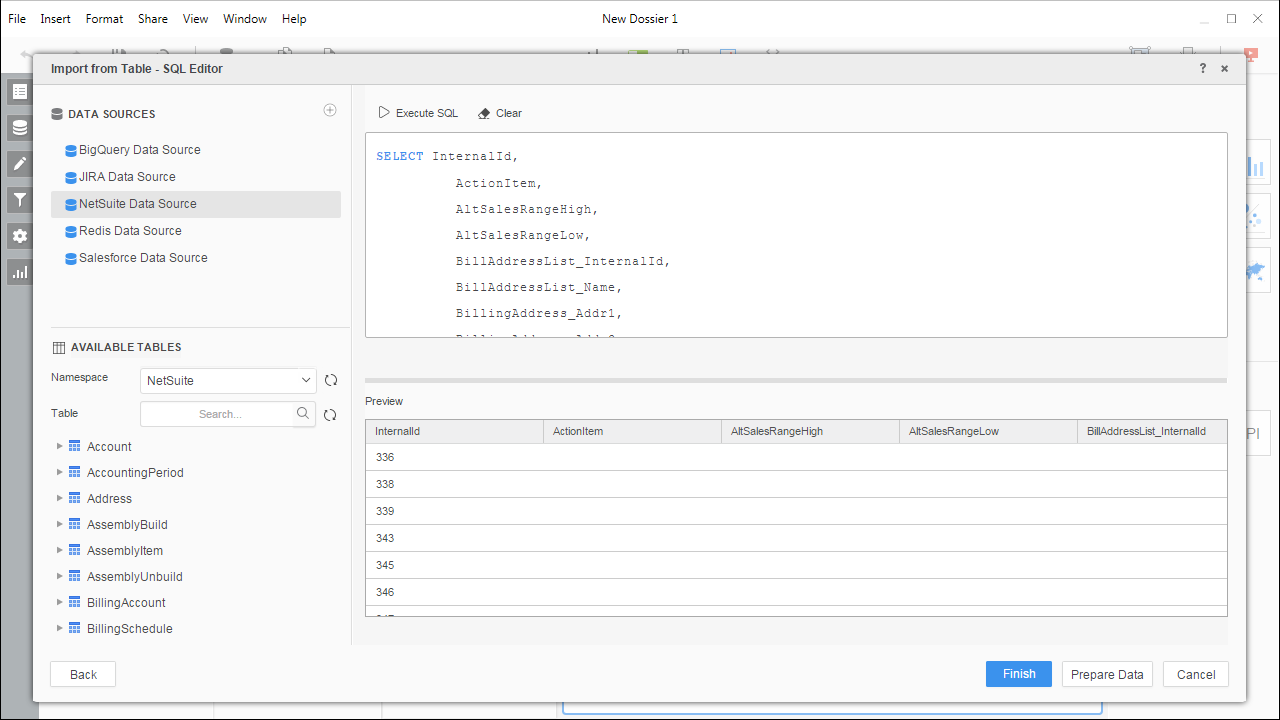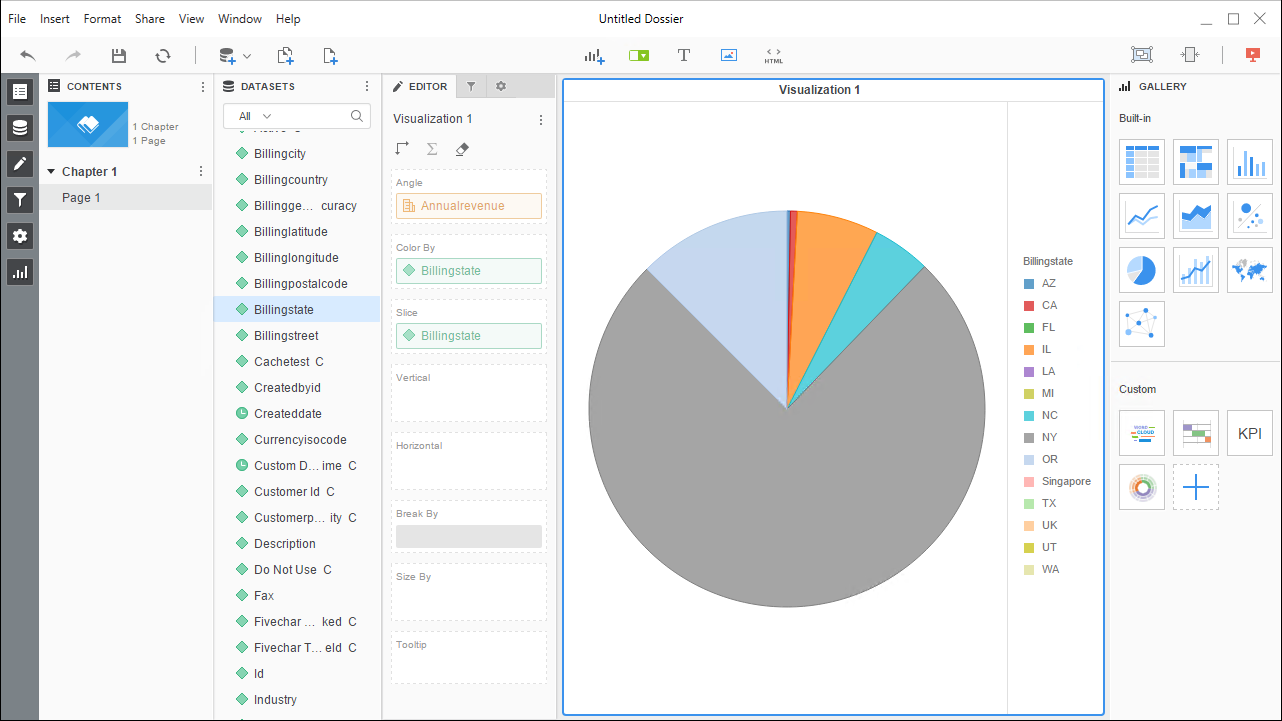Model Context Protocol (MCP) finally gives AI models a way to access the business data needed to make them really useful at work. CData MCP Servers have the depth and performance to make sure AI has access to all of the answers.
Try them now for free →Use the CData ODBC Driver for Jira in MicroStrategy Desktop
Connect to Jira data in MicroStrategy Desktop using the CData ODBC Driver for Jira.
MicroStrategy is an analytics and mobility platform that enables data-driven innovation. When paired with the CData ODBC Driver for Jira, you gain database-like access to live Jira data from MicroStrategy, expanding your reporting and analytics capabilities. In this article, we walk through adding Jira as a data source in MicroStrategy Desktop and creating a simple visualization of Jira data.
The CData ODBC Driver offers unmatched performance for interacting with live Jira data in MicroStrategy due to optimized data processing built into the driver. When you issue complex SQL queries from MicroStrategy to Jira, the driver pushes supported SQL operations, like filters and aggregations, directly to Jira and utilizes the embedded SQL Engine to process unsupported operations (often SQL functions and JOIN operations) client-side. With built-in dynamic metadata querying, you can visualize and analyze Jira data using native MicroStrategy data types.
About Jira Data Integration
CData simplifies access and integration of live Jira data. Our customers leverage CData connectivity to:
- Gain bi-directional access to their Jira objects like issues, projects, and workflows.
- Use SQL stored procedures to perform functional actions like changing issues status, creating custom fields, download or uploading an attachment, modifying or retrieving time tracking settings, and more.
- Authenticate securely using a variety of methods, including username and password, OAuth, personal access token, API token, Crowd or OKTA SSO, LDAP, and more.
Most users leverage CData solutions to integrate Jira data with their database or data warehouse, whether that's using CData Sync directly or relying on CData's compatibility with platforms like SSIS or Azure Data Factory. Others are looking to get analytics and reporting on live Jira data from preferred analytics tools like Tableau and Power BI.
Learn more about how customers are seamlessly connecting to their Jira data to solve business problems from our blog: Drivers in Focus: Collaboration Tools.
Getting Started
Connect to Jira as an ODBC Data Source
Information for connecting to Jira follows, along with different instructions for configuring a DSN in Windows and Linux environments.
To connect to JIRA, provide the User and Password. Additionally, provide the Url; for example, https://yoursitename.atlassian.net.
When you configure the DSN, you may also want to set the Max Rows connection property. This will limit the number of rows returned, which is especially helpful for improving performance when designing reports and visualizations.
Windows
If you have not already, first specify connection properties in an ODBC DSN (data source name). This is the last step of the driver installation. You can use the Microsoft ODBC Data Source Administrator to create and configure ODBC DSNs.
Linux
If you are installing the CData ODBC Driver for Jira in a Linux environment, the driver installation predefines a system DSN. You can modify the DSN by editing the system data sources file (/etc/odbc.ini) and defining the required connection properties.
/etc/odbc.ini
[CData JIRA Sys]
Driver = CData ODBC Driver for Jira
Description = My Description
User = admin
Password = 123abc
Url = https://yoursitename.atlassian.net
For specific information on using these configuration files, please refer to the help documentation (installed and found online).
Connect to and Visualize Jira Data using MicroStrategy Desktop
In addition to connecting Jira in MicroStrategy enterprise products, you can connect to Jira in MicroStrategy Desktop. Follow the steps below to add Jira data as a dataset and create visualizations and reports of Jira data.
- Open MicroStrategy Desktop and create a new dossier.
- In the datasets panel, click New Data, select Databases, and select Type a Query as the Import Option.
- Add a new data source and choose DSN data sources.
- Choose the DSN you previously configured (likely CData JIRA Sys) and select Generic DBMS in the Version menu.
- Set the User and Password properties for the DSN (or use placeholder values) and name the data source.
- Select the new database instance to view the tables. You may need to manually click the search icon in the Available Tables section to see the tables.
- Create a SQL query for the Jira data (see below) and click Execute SQL to test the query.
SELECT * FROM Issues![Querying Jira for data.]() NOTE: Since we create a live connection, we can execute a SELECT * query and utilize the filtering and aggregation features native to the MicroStrategy products.
NOTE: Since we create a live connection, we can execute a SELECT * query and utilize the filtering and aggregation features native to the MicroStrategy products. - Click Finish and choose to connect live.
- Choose a visualization, choose fields to display (data types are discovered automatically through dynamic metadata discovery) and apply any filters to create a new visualization of Jira data. Where possible, the complex queries generated by the filters and aggregations will be pushed down to Jira, while any unsupported operations (which can include SQL functions and JOIN operations) will be managed client-side by the CData SQL Engine embedded in the driver.
![Visualize Jira data.]()
- Once you are finished configuring the dossier, click File -> Save.

Using the CData ODBC Driver for Jira in MicroStrategy Desktop, you can easily create robust visualizations and reports on Jira data. Read our other articles on connecting to Jira in MicroStrategy and connecting to Jira in MicroStrategy Web for more examples.

 NOTE: Since we create a live connection, we can execute a SELECT * query and utilize the filtering and aggregation features native to the MicroStrategy products.
NOTE: Since we create a live connection, we can execute a SELECT * query and utilize the filtering and aggregation features native to the MicroStrategy products.
